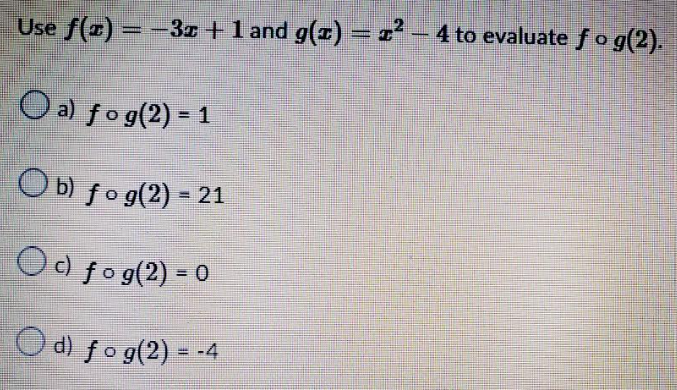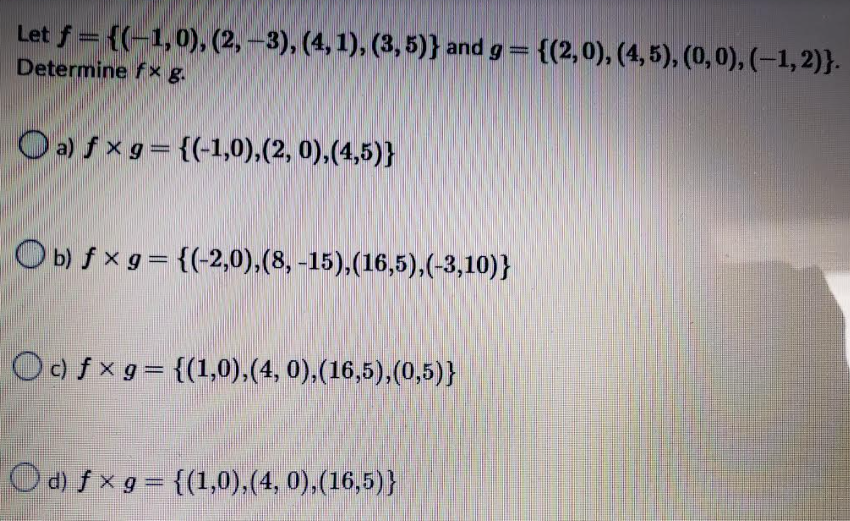Use ƒ(z) = −3x + 1 and g(x) = x² −– 4 to evaluate fo g(2). Oa) fog(2) = 1 Ob) fog(2) = 21 Oc) fog (2) = 0 d) fog(2) = -4
Use ƒ(z) = −3x + 1 and g(x) = x² −– 4 to evaluate fo g(2). Oa) fog(2) = 1 Ob) fog(2) = 21 Oc) fog (2) = 0 d) fog(2) = -4
Algebra: Structure And Method, Book 1
(REV)00th Edition
ISBN:9780395977224
Author:Richard G. Brown, Mary P. Dolciani, Robert H. Sorgenfrey, William L. Cole
Publisher:Richard G. Brown, Mary P. Dolciani, Robert H. Sorgenfrey, William L. Cole
Chapter8: Introduction To Functions
Section8.8: Linear And Quadratic Functions
Problem 4ST
Related questions
Question

Transcribed Image Text:Use ƒ(z) = −3x + 1 and g(x) = x² −– 4 to evaluate fo g(2).
Oa) fog(2) = 1
Ob) fog(2) = 21
Oc) fog (2) = 0
d) fog(2) = -4

Transcribed Image Text:Let f = {(-1,0), (2, -3), (4, 1), (3,5)} and g = {(2, 0), (4, 5), (0, 0), (-1, 2)}.
Determine fx g.
Oa) fxg= {(-1,0),(2, 0),(4,5)}
Ob) fx g = {(-2,0), (8, -15),(16,5),(-3,10)}
Oc) fx g = {(1,0),(4, 0), (16,5),(0,5)}
Od) fx g = {(1,0),(4, 0),(16,5)}
Expert Solution
This question has been solved!
Explore an expertly crafted, step-by-step solution for a thorough understanding of key concepts.
Step by step
Solved in 3 steps with 2 images

Recommended textbooks for you

Algebra: Structure And Method, Book 1
Algebra
ISBN:
9780395977224
Author:
Richard G. Brown, Mary P. Dolciani, Robert H. Sorgenfrey, William L. Cole
Publisher:
McDougal Littell

College Algebra
Algebra
ISBN:
9781305115545
Author:
James Stewart, Lothar Redlin, Saleem Watson
Publisher:
Cengage Learning


Algebra: Structure And Method, Book 1
Algebra
ISBN:
9780395977224
Author:
Richard G. Brown, Mary P. Dolciani, Robert H. Sorgenfrey, William L. Cole
Publisher:
McDougal Littell

College Algebra
Algebra
ISBN:
9781305115545
Author:
James Stewart, Lothar Redlin, Saleem Watson
Publisher:
Cengage Learning
